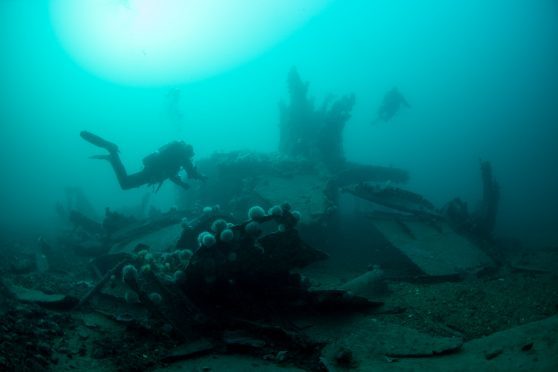Divers have begun a new survey of the remains of the scuttled German fleet in Scapa Flow.
These eerie pictures show divers from the Orkney Research Centre for Archaeology (ORCA), the University of the Highlands and Islands Archaeology Institute working on the sea bed.
It is the second phase of a survey designed to examine the condition of the wrecks.
The ships date back to the end of World War I when the German High Seas Fleet was towed to Scapa Flow after surrendering.
The fleet spent several months in captivity – but in June 1919 the signal was given to deliberately sink the ships rather than allow them to be seized.
Of the 74 German ships in Scapa Flow, 15 of the 16 capital ships, 5 of the 8 cruisers, and 32 of the 50 destroyers were sunk.
The majority of the ships were salvaged for scrap but some of them remain on the seabed.
It was initially deemed not to be economically worthwhile raising the wrecks but it was decided to move them after locals raised concerned about the impact on navigation in Scapa Flow.
The seven wrecks that remain are scheduled ancient monuments.
Divers are allowed to visit them but need a permit to do so.
Sandra Henry, marine archaeologist for ORCA, said, ” We concentrated on sites located through side scan sonar survey completed in phase one and we recorded and documented extensive remains of the World War I fleet that still lie on the seabed.
“The conditions underwater were perfect and visibility was good, allowing the divers to take some excellent photographs and video footage while recording and surveying the wreckage left behind following the inter-war salvage efforts on the scuttled German High Seas Fleet.”
The research will shed further light on the debris itself and will identify from which ships the wreckage originated.
The project is being conducted on behalf of Historic Environment Scotland.
